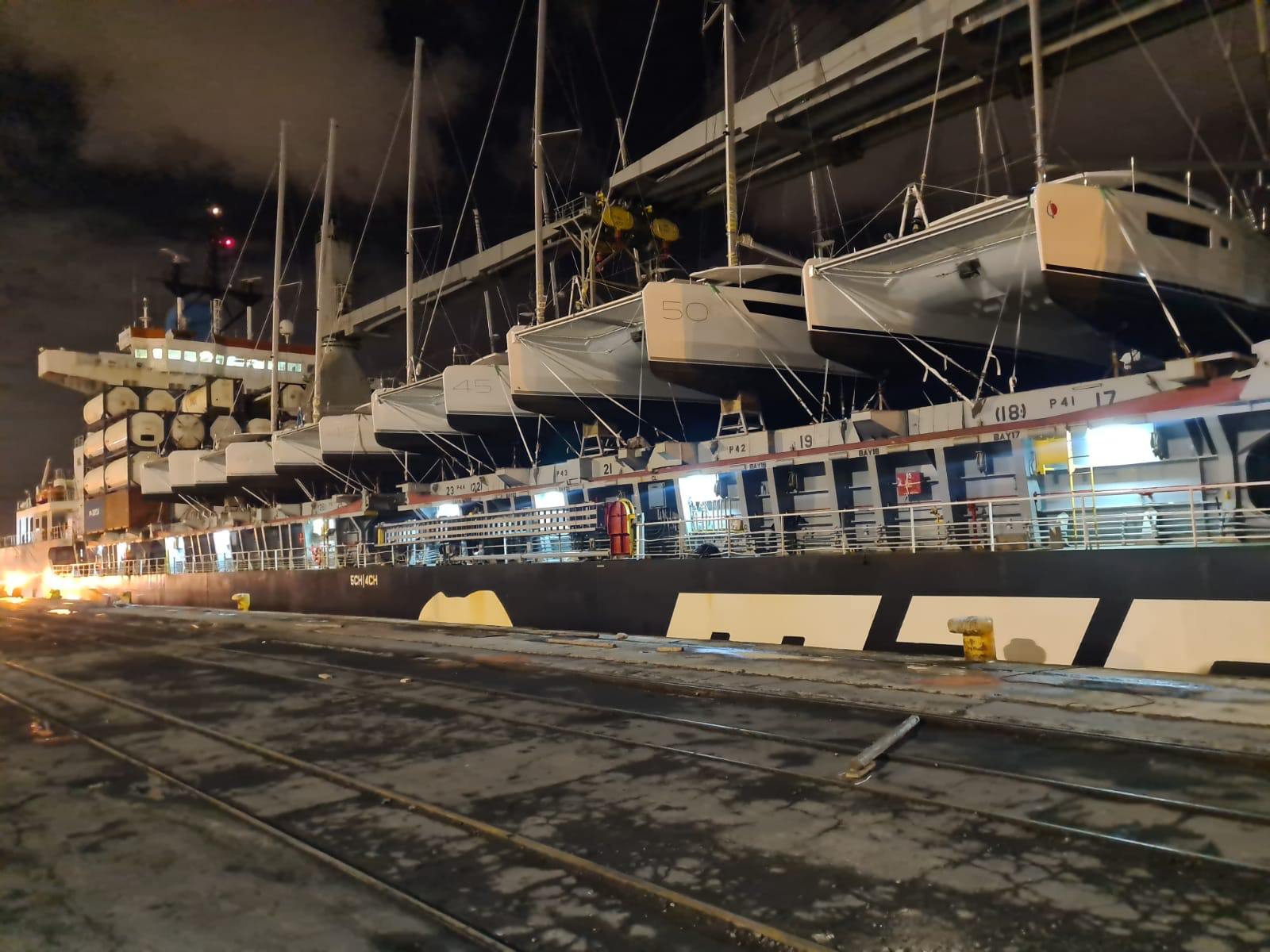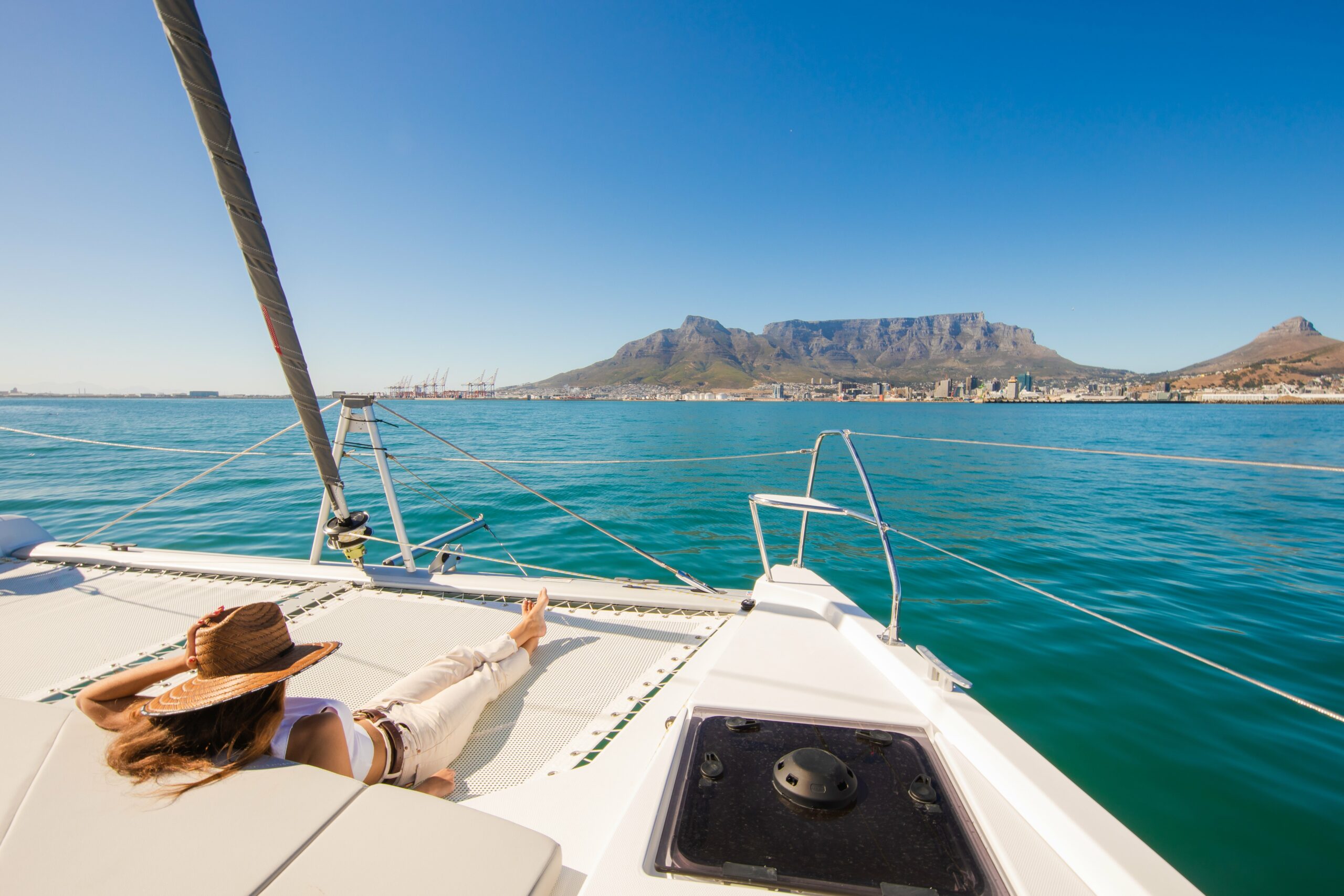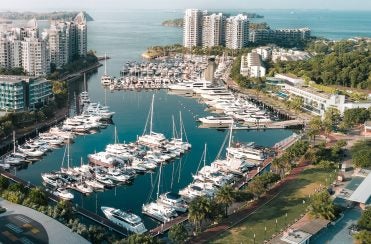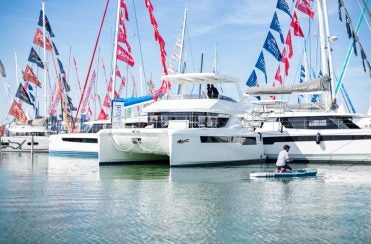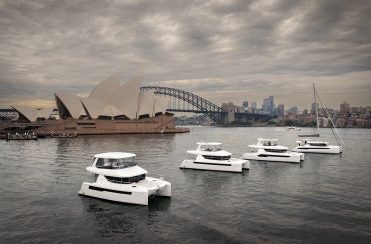Whether to take delivery in South Africa or in Europe? That is the question.
As multihulls have gained in popularity over the last few years, the reputation of Leopard catamarans has grown worldwide. Catamaran enthusiasts can now be found in all four corners of the world, yet relatively few customers actually live near the shipyards where they are built. So, be it directly when placing an order, or later on, during the period preceding the boat’s actual launch, an important decision has to be taken: should you go to pick up your boat in South Africa or have it delivered to Europe? 25 Leopards arrive in Europe every year, so we now have a fairly clear idea of the advantages and drawbacks of these two options.
Based for the last thirty years just a few hundred metres away from the legendary Royal Cape Yacht Club, Robertson & Caine shipyards, where Leopard catamarans are constructed, are the standard-bearers of South African know-how in multihull technology. However, this should not be considered the only incentive to make a trip to the so-called Rainbow nation (the charming nickname for this country, coined by Desmond Tutu). Indeed, visitors arriving from a harsh European winter will be pleasantly surprised by its Mediterranean climate, its unique Safari parks, e.g., the Kruger National Park, and for those of us more interested in nautical pursuits, the opportunity to sail around in the vicinity of the mythical Cape of Good Hope. When you put all those factors together, taking delivery of your catamaran in South Africa may sound like a really attractive idea.
And that is not as far-fetched an idea as it sounds, because more than 20% of European Leopard owners do in fact take delivery of their boat within shouting distance of Table Mountain. However, it should be noted that this proportion remains relatively low due to the fact that, contrary to what we may at first think, this solution is by no means the cheaper of the two options. And, above all, it is very time-consuming. Although Cape Town, with its population of 4.7 million inhabitants, is the legislative capital of the country, its marina is not really comparable to those found in Europe. Even for those who speak English fluently, it nevertheless remains relatively unexplored territory and fitting out a boat may end up becoming an adventure in itself. Arnaud Savignat, our European sales manager, had to overcome several exotic, unpredictable and perhaps significant pitfalls before being able to set off, notably having to hang around at dock three extra days because the government had requisitioned all the stocks of diesel, thereby making it impossible to fill the tanks up with sufficient fuel for such a long trip!
Several weeks, perhaps even one or two months, must be set aside for recce visits and meeting people, but also for preparing the boat and finalizing all the necessary details before undertaking a long, transoceanic voyage. And let’s not forget all the extra costs (flights, hotels, meals, unexpected local overheads, shipping material not available locally…) which can overstretch the budget even before the boat has left the quayside. Once Robben Island has been rounded and left in your wake, if all goes to plan, in theory there are still almost 6000 nautical miles left to be managed before making it back to Europe. Unfortunately, this is rarely the case, as weather conditions usually make it necessary to significantly lengthen the direct route. Stopovers for technical or touristic reasons will have to be planned in, and will probably be highly enjoyable. Getting round the Saint Helena high, for instance, may involve sailing towards the coast of Brazil, skirting round the Lesser Antilles arc, and then heading back across to the Azores, before being able to set a direct course towards Europe. But after all that, the final log reading will almost certainly display 9000 or 10000 nautical miles. Admittedly the boat will now be tested and proven but, unfortunately, it will no longer count as being a new boat. And that may not be the only drawback as, if the boat has been convoyed using professional crew, you will have to cost in any extra expenses incurred.
Delivery by cargo ship therefore seems to be by far the most sensible solution for anyone who is still working or who has only a one-year sabbatical. Furthermore, the final balance is only payable once the boat has been delivered in Europe, and the Leopard technical team are always there to help new owners get their brand-new boat ship shape and ready to sail. Leopard’s base in Saint Raphaël is the most convenient place to transfer boats in Europe to. However, it is always possible to have them delivered to one of the group’s bases elsewhere, be it where the cargo ship docks in in the Caribbean (Guadeloupe and Martinique), or further North, if necessary (Scandinavia) or even on the other side of the world (Phuket). Whatever destination is chosen, costs are kept to a minimum and will certainly end up being lower than those incurred when delivery is made in Cape Town and then followed by at least 60 uncertain days at sea.
To quote Arnaud Savignat, having the boats transported by cargo ship to Europe is “the wise decision. Going to pick it up in South Africa is only viable if it is part of an overall plan where time is not an issue, and it forms the starting point of a long-term adventure”. If this is the case, it can then be considered as an opportunity to walk in the footsteps of Napoleon, to stop over in Brazil or to sail around the Caribbean. And at this point, a major decision will have to be taken: head east back to Europe, or west towards the Pacific. Because, once you’ve made it so far… well, just another 1000 nautical miles and you’re in Panama….
{{cta(‘7e0d17cc-6e9e-4f6f-81dd-8c311c77e5c9’)}}
Get familiar with our South African factory in the below video and see the awesome work the team does for yourself!
In case you have any other questions, please call us on +33 (0)4 92 00 09 03 or fill in our contact form.
